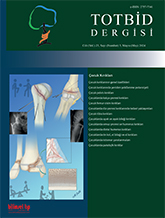
Femoral shaft fractures are among the most common long bone fractures in pediatric patients. They require hospitalization more often than other long bone injuries. Pediatric femoral shaft fractures differ according to age group in terms of formation mechanism and treatment options. They have a special importance in terms of being an indicator of pre-toddler child abuse. In the older age group, the mechanisms of occurrence are high-energy traumas. Recurrent fractures or fractures with minor trauma should raise suspicion for pathological fractures. Treatment approaches differ from adult patients due to bone growth and remodeling with age. Treatment planning is made by evaluating the findings such as age, weight, fracture type and additional injury together. Pelvipedal casts, flexible intra-canal nails, external fixators, plate-screw systems or rigid intra-canal nails can be used in the treatment. It is important to pay attention to open physis injuries and bone circulation in surgical treatment applications. Vascular nerve injuries or compartment syndrome are the main complications in the early period; in the long term, complications such as leg length inequalities, angular deformities and union problems may occur. The results are promising when appropriate treatment options are used together with a good patient assessment.